|
|
|
Bottle & Product Histories Beer
Beer was brewed from ancient times and no doubt it was
bottled soon afterwards.
The first records of brewing are about 6,000 years old and refer to
the Sumerians. Sumer was between the Tigris and Euphrates rivers, and
in the area of Southern Mesopotamia. An ancient clay tablet engraved
with the Sumerian language outlines the steps for making beer. This
tablet has pictographs that represent barley, baking bread, crumbled
bread being put into water and made into mash and then a drink. The
Sumerians perfected this process and are recognized as the first
civilized culture to brew beer. They brewed beer that they offered to
their gods as in a 1800 B.C. hymn to Ninkasi, the goddess of brewing.
The beer was drunk out of jars with a straw to help filter out the
sediments and soggy bread that was part of the brew.
When the Sumerian empire collapsed, the Babylonians became the rulers
of Mesopotamia and incorporated the Sumerian culture into their own.
As a result, they acquired the knowledge to brew beer. The Babylonians
brewed at least twenty different types of beer. The beers were brewed
with pure emmer (prehistoric grain type similar to spelt), pure
barley or a mixture of grains. The Babylonian king Hammurabi enacted a
law that established a daily beer ration. The higher ones rank, the
more beer that was rationed. High priests received two and a half
times the ration of a common worker. The Babylonians also exported
beer to Egypt.
The Egyptians soon learned the art of brewing and carried the
tradition into the next millennium. They continued to use bread for
brewing beer but also added dates to flavor it. The ancient Egyptians
even had a hieroglyph for the word brewer, which illustrates the
importance of brewing to the culture. Ancient Egyptian documents show
that beer and bread were part of the daily diet and was consumed by
the wealthy and poor alike. Beer was an important offering to the gods and
was placed in tombs for the afterlife.
With the rise of the Greek and Roman Empires, beer continued to be
brewed, but wine was the drink of preference. In Rome itself, wine
became the drink of the gods and beer was only brewed in areas where
wine was difficult to obtain. To Romans, beer was the drink of
barbarians. Tacitus, a Roman historian, wrote about the Teutons, the
ancient Germans, and documented "a liquor from barley or other grain"
that these people drank.
During these ancient times, brewing beer was a woman's job. In some
cultures beer was brewed by priestesses in the temples. During the
Middle Ages this changed when brewing was carried on in monasteries.
It is interesting that monks were able to drink beer when fasting.
Beer was a drink and not food. This runs contrary to later beliefs
where beer was considered "liquid bread."
When Columbus first arrived in the New World, the American Indians
that he met served him a corn-based beer. The Aztecs, Incas and Mayans
had been brewing such beers for hundreds of years before the arrival
of Europeans.
Beer was considered a healthy drink for most of its history and was a
good source of nourishment. It was often advertised as good for the
sick and elderly. But perhaps it biggest health advantage was that
beer was brewed. At a time when impurities and microbes in water were
unknown, beer provided a safer drink as it was boiled as part of the
brewing process. Beer drinkers were less susceptible to waterborne
diseases and thus healthier. Over the centuries this trend was noticed
but was not understood until pasteurization was discovered.
Most beers brewed over the last four hundred years have been made of
the following ingredients:
- Barley malt for fullness
- Hops add bitterness
- Yeast to convert barley malt sugars into alcohol
- Water to serve as a medium for the fermentation process
Brewers over the years have substituted other grains for the barley.
These include corn, wheat and rice.
The early brewing centers of modern times were England, Holland and
Germany. English beers had the greatest influence on American
consumers at the country's founding and through the mid-Nineteenth
century. The first brewing center in the New World was run by
the Dutch on Manhattan Island or New Amsterdam. During the second half
of the Seventeenth Century, the Dutch were exporting some beer, but
much beer was still imported. The problem in Manhattan was getting a good supply of water and this problem was not addressed for another
150 years. Even so, the brews were various ales and beers also common
in England.
Starting around 1700, Philadelphia started to emerge as the brewing
center of the English Colonies in America. A good supply of water, the
productive farmlands that surrounded Philadelphia, a thirsty
population and the skills of the English trained brewers were
responsible for this. Soon Philadelphia beers were exported to all of
the English Colonies in America. George Washington was an ardent fan
of Philadelphia porter and ordered quantities of it for consumption at
his Mount Vernon home. The beer bottles of this period were the common
black glass bottles that were also used to bottle wine and other
spirits. In the late 1700s, the shapes of wine and beer
bottles started to evolve in different directions. Wine bottles
started to be more slender with higher shoulders, while beer bottles
tended to be shorter with lower shoulders. This beer bottle shape,
known as the
porter shape,
was associated with English
beers and remained in use until well after 1900. In the
1840s, a new English bottle form started to evolve from the porter
shape. These bottles grew taller and narrower and the neck evolved a bulge. This style was exported
to North America and is known as the export beer shape.
American glass manufactures started to produce this form in
about 1855. The earliest form of this type is known as an early
export beer. Later, in the 1880s, a bottle with a softer
shoulder
and gentler bulge in the neck evolved called the later export beer
shape. This shape endures today in many beer bottles.
During the 1830s, a new style of beer, lager, was being brewed in Germany. The
Germans had isolated a strain of yeast that produced a lighter beer.
This yeast was a bottom fermenting yeast (Saccharomyces uvarum) as
opposed to the top fermenting yeasts (Saccharomyces cerevisiae) used
to produce the heavier English style beers. In 1840, John Wagner
smuggled some of this yeast out of Germany and to Philadelphia, where
he brewed the first lager beer in America. The earliest lager beer
bottle had a distinctive shape that is called an
early lager. This
beer did not find popularity immediately in Philadelphia where the
German population was well established, but did become very popular in
the Midwest where many of the new German immigrants were settling.
Slowly, lager beers gained in popularity in the older settled areas of
the United States, but it took almost thirty years until the German
style lager beers usurped the English style beers in these areas.
Lager beer bottles of this period are called
late
lagers. By this time, the Midwestern breweries in Saint Louis and Milwaukee had a firm handle on
the market and would eventually dominate beer production in the United
States. Around 1875, a new style of beer bottle appeared in the New
York area. This style is the called the champagne beer style and
remained popular until well into the twentieth century and its shape
can be seen in many of today's beer bottles.
Around 1875 beers start to acquire trade marked names. Prior to this
point beers were advertised by their brewer, the type of beer or the
region it was from. Widely advertised types of beer included; lager,
ale, brown stout, cream ale, weiss beer and bock. Regional branding
included; Philadelphia Porter and Ale, Saint Louis Lager, Milwaukee
Lager, and Pentucket Ale. Of the branded beers, one of the most
enduring is Budweiser (1876), but others include Pabst Blue Ribbon
(1882) and Miller High Life (1903).
|
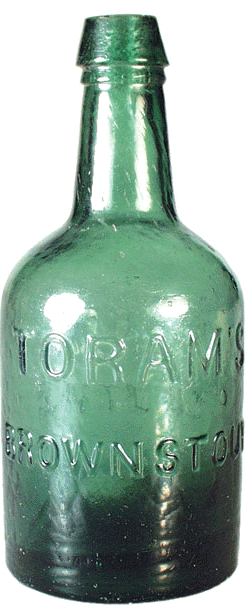 |
| Circ: 1845 |
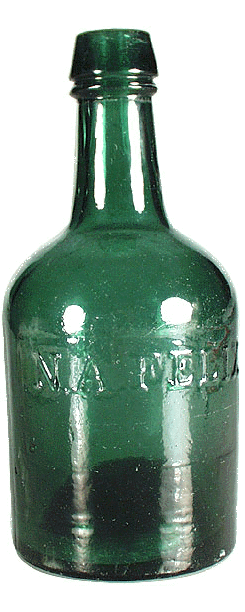 |
| Circ: 1850 |
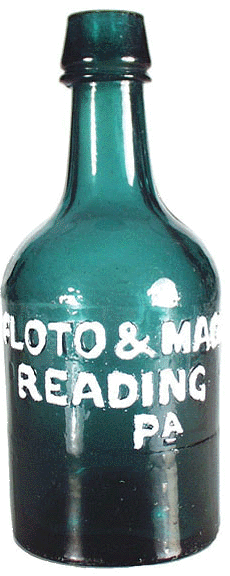 |
| Circ: 1855 |
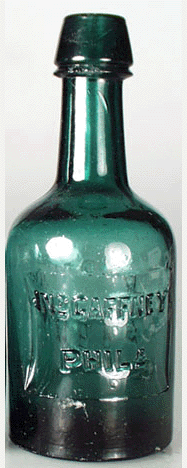 |
| Circ: 1860 |
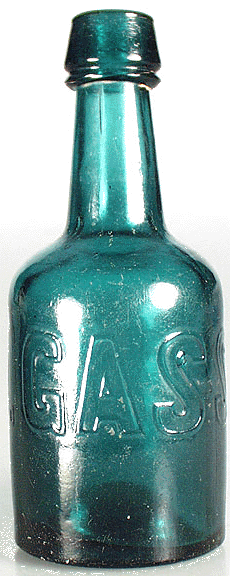 |
| Circ: 1865 |
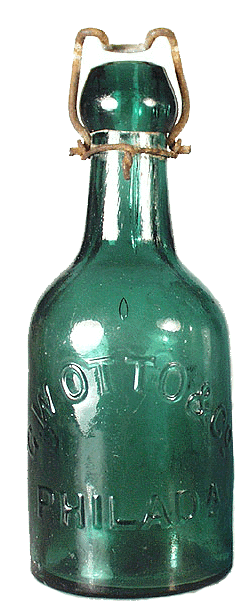 |
| Circ: 1870 |
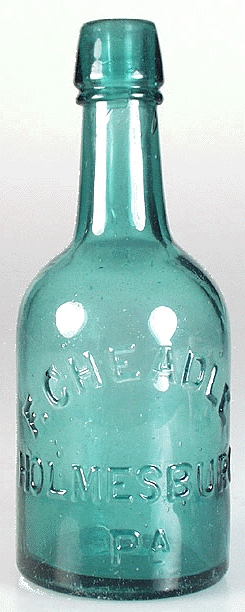 |
| Circ: 1875 |
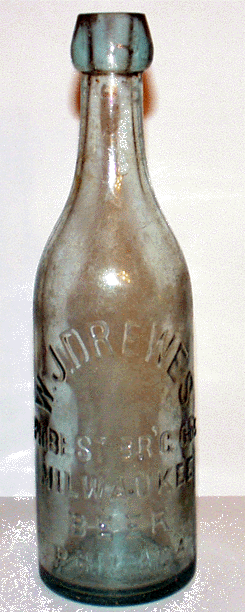 |
| Circ: 1880 |
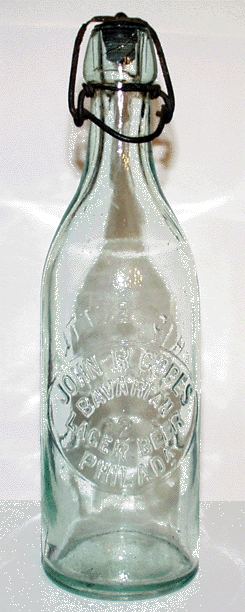 |
| Circ: 1885 |
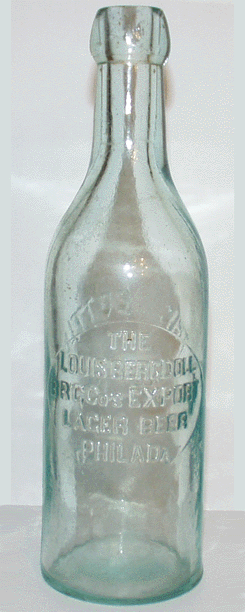 |
| Circ: 1890 |
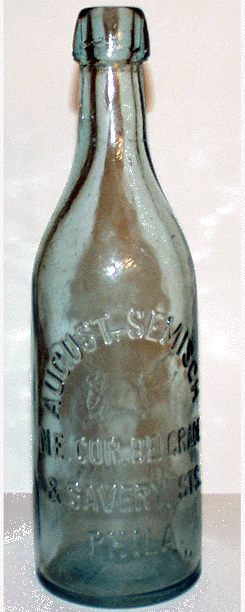 |
| Circ: 1895 |
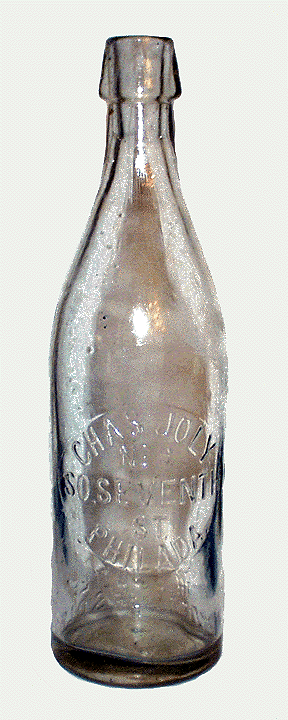 |
| Circ: 1900 |
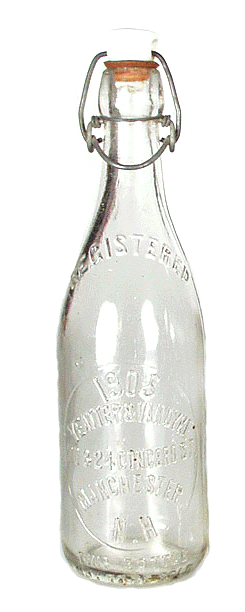 |
| Circ: 1905 |
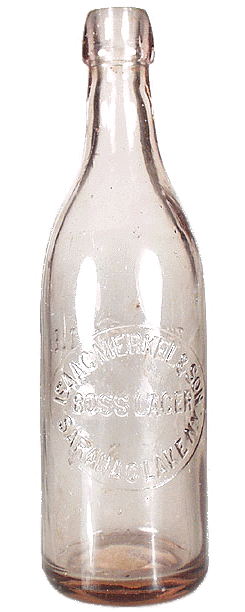 |
| Circ: 1910 |
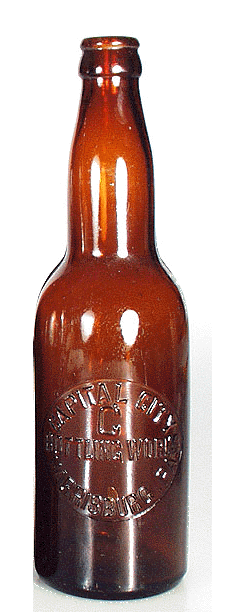 |
| Circ: 1915 |
|
|

